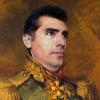Home
Tips & Tricks
Sony Tips
Sony a6400
Sony a6300
Sony a6000
Canon Tips
Canon M50 Mark II
Canon M50
Canon 6D Mark II
Canon 6D
Canon 7D Mark II
Canon 7D
Canon 90D
Canon 80D
Canon 77D
Canon 70D
Canon 60D
Canon T7 · 2000D
Canon T7i · 800D
Canon T6s · 760D
Canon T6i · 750D
Canon T6 · 1300D
Canon T5i · 700D
Canon T5 · 1200D
Canon T4i · 650D
Canon T3i · 600D
Canon T3 · 1100D
Canon T2i · 550D
Canon SL2 · 200D
Canon SL1 · 100D
Nikon Tips
Nikon D750
Nikon D500
Nikon D7500
Nikon D7200
Nikon D7100
Nikon D5600
Nikon D5500
Nikon D5300
Nikon D5200
Nikon D5100
Nikon D3500
Nikon D3400
Nikon D3300
Nikon D3200
Nikon D3100
Cheat Sheets
Sony Cheat Sheets
Sony a6300
Sony a6000
Canon Cheat Sheets
Canon M50 Mark II
Canon M50
Canon 6D Mark II
Canon 6D
Canon 7D Mark II
Canon 7D
Canon 90D
Canon 80D
Canon 77D
Canon 70D
Canon 60D
Canon T7 · 2000D
Canon T7i · 800D
Canon T6s · 760D
Canon T6i · 750D
Canon T5i · 700D
Canon T6 · 1300D
Canon T5 · 1200D
Canon T4i · 650D
Canon T3i · 600D
Canon T3 · 1100D
Canon T2i · 550D
Canon SL2 · 200D
Canon SL1 · 100D
Nikon Cheat Sheets
Nikon D750
Nikon D500
Nikon D7500
Nikon D7200
Nikon D7100
Nikon D5600
Nikon D5500
Nikon D5300
Nikon D5200
Nikon D5100
Nikon D3500
Nikon D3400
Nikon D3300
Nikon D3200
Nikon D3100


Comments
You will have to experiment with color temperature, as museum light varies greatly. Auto white balance may work all right, but you should shoot in Raw mode if possible, so that you can fine tune it later.
The kit 18-55mm lens should work pretty well for this, with the normal 35mm pretty much on the money for most things.
Either manual or aperture priority should work. The latter may be a bit easier if light varies greatly from one object to the next, since it will fine tune the shutter speed without your needing to match the meter. Matrix metering should be just fine unless there are bright lights or windows in your frame. If you are shooting a dark subject with a light background or distracting windows and lights, switch to center weighted or spot mode depending on how much of the frame your subject occupies. If you shoot Raw, you can correct by + or - two stops afterwards, too. If light is difficult, you can skip the metering changes and just go back to manual mode and try disobeying the matrix meter until you get it right.
You will likely need to use a wide aperture in the dim light, and try not to put your ISO too high, as the dark shades will tend to accentuate digital noise. For moody shots of people looking at things, you may need more depth of field, and can also afford more digital noise. For the exhibits, I'd try to stay between 100 and 400 ISO. With VR on, at wide angles, you may find you can hand hold pretty slowly, so turn off auto ISO so it does not up your ISO when shutter speed goes below 1/30, or experiment with your steadiness and reset the menu option for the speed at which it changes. If you're shooting flat work like paintings, you don't need much depth of field, so you can keep it minimal. Single point focus is likely to be more precise, so set it to S.
If shooting things behind glass, or things that are shiny, try to position yourself to minimize reflections. A polarizing filter would be nice, but if you're using the kit lens with its rotating front element, it's not very practical.
For paintings and the like, try to avoid shooting at an angle which will distort shapes, and mess up your shallow depth of field. If you shoot at a wider angle, you can shoot level and crop as needed, and in the process sometimes get rid of the fuzziness and distortion that tend to be worse at the edges of a frame.
If you're shooting paintings that are hung too high to shoot level conveniently, switch to live view, and hold the camera higher.
If you can't eliminate reflections or simply can't reach with a straight on shot, shoot at an angle if you must. Some perspective distortion can be corrected in post processing, though it's better if you get it right to start with.
(see here)